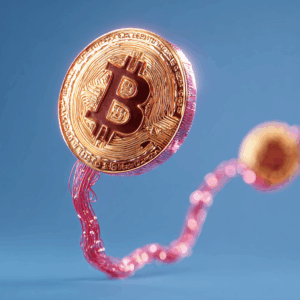
The Crypto Market's Transformation
As the crypto market undergoes a transformative era, Coinbase's 2024 Crypto Market Outlook provides valuable insights and predictions. This comprehensive 80-page report, which encompasses data up to November 30, 2023, delves into pivotal shifts and institutional practices within the crypto market.
A New Phase: End of the Crypto Winter
The report reveals that the total crypto market capitalization doubled in 2023, signaling the end of the crypto winter and the beginning of a transition phase. Despite facing challenges in the past, the market's remarkable recovery and sustained development highlight the resilience and longevity of cryptocurrencies.
"What's clear, however, is that in spite of the hurdles directed towards the asset class, the developments we witnessed over the past year have defied expectations," notes the Coinbase 2024 report. "They are evidence that crypto is here to stay. The challenge now is to seize the moment and build something better."
Bitcoin's Role as a Safe Haven
The report emphasizes that in 2023, bitcoin (BTC) solidified its status as a safe haven amidst geopolitical upheavals and financial crises. The introduction of spot bitcoin ETFs by leading U.S. financial institutions marked a significant recognition of bitcoin's disruptive potential and a potential step towards enhanced regulatory clarity.
"But progress rarely moves in a straight line," detail the Coinbase researchers. "To create a more resilient market, developers will need to continue building towards real-world use cases that help us cross the chasm from early adopters to mainstream users."
Shift Towards Practical Use Cases
A key theme for 2024 highlighted in the report is a shift in crypto trading towards practical use cases, bridging the gap between early adopters and mainstream users. Coinbase believes that developments in Web2 analogs and blockchain infrastructure, along with innovations like decentralized identity and physical infrastructure networks, are paving the way for this transition.
Bitcoin's Dominance and Institutional Interest
In 2023, bitcoin's dominance in the digital asset market increased, driven by institutional interest and the introduction of spot bitcoin ETFs in the United States. Coinbase predicts that this trend will continue, with institutional flows remaining focused on BTC at least during the first half of 2024. BTC outperformed most traditional assets in the latter half of 2023.
This momentum is expected to carry into 2024, with BTC potentially benefiting from broader economic trends and pressures on traditional financial systems. The report also mentions the emerging trend of Bitcoin Ordinals and highlights the importance of implementations like Rootstock, Stacks, RGB, and BitVM.
Infrastructure Development and Transition to Web3 Applications
The report acknowledges significant infrastructure development within the crypto space, including scaling solutions and security services. Coinbase researchers believe that this has laid the foundation for the emergence of decentralized applications, signaling a transition in trading regimes towards Web3 applications.
Furthermore, the report mentions the notable growth of layer two (L2) scaling solutions, such as OP Stack and Arbitrum Orbit. However, Ethereum's mainnet has maintained stable transaction counts, with L2s primarily impacting alternative L1 platforms.
A Cautiously Optimistic Outlook
The report concludes that the trajectory of the U.S. economy in 2024 appears cautiously optimistic, with a decreased likelihood of a recession. It suggests that this economic setting, coupled with the potential of Federal Reserve cuts, could lead to a weaker USD, presenting opportunities for cryptocurrencies.
What are your thoughts on Coinbase's 2024 outlook report? Share your opinions and insights in the comments section below.
Frequently Asked Questions
Can I have physical gold in my IRA
Not just paper money or coins, gold is money. It's an asset that people have used for thousands of years as a store of value, a way to keep wealth safe from inflation and economic uncertainty. Investors today use gold to diversify their portfolios because gold is more resilient to financial turmoil.
Many Americans are now more inclined to invest in precious metals like gold and silver than stocks or bonds. Even though owning gold is not a guarantee of making money, there are many reasons why you might want to add gold to your retirement savings portfolio.
One reason is that gold historically performs better than other assets during financial panics. The S&P 500 dropped 21 percent in the same time period, while gold prices rose by nearly 100 percent between August 2011-early 2013. During these turbulent market times, gold was among few assets that outperformed the stocks.
One of the best things about investing in gold is its virtually zero counterparty risk. Your shares will still be yours even if your stock portfolio drops. Gold can be worth more than its investment in a company that defaults on its obligations.
Finally, gold provides liquidity. This means that you can sell gold anytime, regardless of whether or not another buyer is available. You can buy gold in small amounts because it is so liquid. This allows you take advantage of the short-term fluctuations that occur in the gold markets.
What precious metal should I invest in?
This question depends on how risky you are willing to take, and what return you want. Although gold has traditionally been considered a safe investment choice, it may not be the most profitable. If you are looking for quick profits, gold might not be the right investment. If you have time and patience, you should consider investing in silver instead.
If you don’t want to be rich fast, gold might be the right choice. Silver may be a better option for investors who want long-term steady returns.
Who owns the gold in a Gold IRA?
The IRS considers any individual who holds gold “a form of income” that is subject to taxation.
To take advantage of this tax-free status, you must own at least $10,000 worth of gold and have been storing it for at least five years.
While gold may be a great investment to help prevent inflation and volatility in the market, it's not wise to keep it if you won't use it.
You will need to declare the value of gold if you intend on selling it one day. This could impact how capital gains taxes you owe for cash investments.
A financial planner or accountant should be consulted to discuss your options.
Statistics
- Indeed, several financial advisers interviewed for this article suggest you invest 5 to 15 percent of your portfolio in gold, just in case. (aarp.org)
- If you accidentally make an improper transaction, the IRS will disallow it and count it as a withdrawal, so you would owe income tax on the item's value and, if you are younger than 59 ½, an additional 10% early withdrawal penalty. (forbes.com)
- Instead, the economy improved, stocks rebounded, and gold plunged, losing 28 percent of its value in 2013. (aarp.org)
- The price of gold jumped 131 percent from late 2007 to September 2011, when it hit a high of $1,921 an ounce, according to the World Gold Council. (aarp.org)
- You can only purchase gold bars at least 99.5% purity. (forbes.com)
External Links
forbes.com
law.cornell.edu
- 7 U.S. Code SS 7 – Designation of boards of trade as contract markets
- 26 U.S. Code SS 408 – Individual retirement accounts
wsj.com
- Saddam Hussein's InvasionHelped Uncage a Bear In 1991 – WSJ
- Do you want to keep your IRA gold at home? It's Not Exactly Lawful – WSJ
cftc.gov
How To
The History of Gold as an Asset
Gold was a currency from ancient times until the early 20th century. It was widely accepted around the world and enjoyed its purity, divisibility and uniformity. It was also traded internationally due to its high value. Because there were no internationally recognized standards for measuring and weighing gold, the different weights of this metal could be used worldwide. One pound sterling, for example, was equivalent in England to 24 carats, and one livre tournois, in France, to 25 carats. A mark, on the other hand, was equivalent in Germany to 28 carats.
In the 1860s, the United States began issuing American coins made up of 90% copper, 10% zinc, and 0.942 fine gold. The result was a decrease in foreign currency demand, which led to an increase in their price. In this period, large amounts of gold coin were minted by the United States, which caused the gold price to drop. Because the U.S. government had too much money coming into circulation, they needed to find a way to pay off some debt. They decided to return some of the gold they had left to Europe.
Most European countries distrusted the U.S. Dollar and began to accept gold as payment. After World War I, however, many European countries started using paper money to replace gold. The gold price has gone up significantly in the years since. Even though gold's price fluctuates, it is still one of the most secure investments you could make.
—————————————————————————————————————————————————————————————-
By: Jamie Redman
Title: Coinbase's 2024 Crypto Market Outlook: Insights and Predictions
Sourced From: news.bitcoin.com/coinbase-2024-outlook-marks-end-of-crypto-winter-ordinals-leading-nft-shift-heralds-era-of-prosperity/
Published Date: Tue, 19 Dec 2023 22:30:42 +0000
















